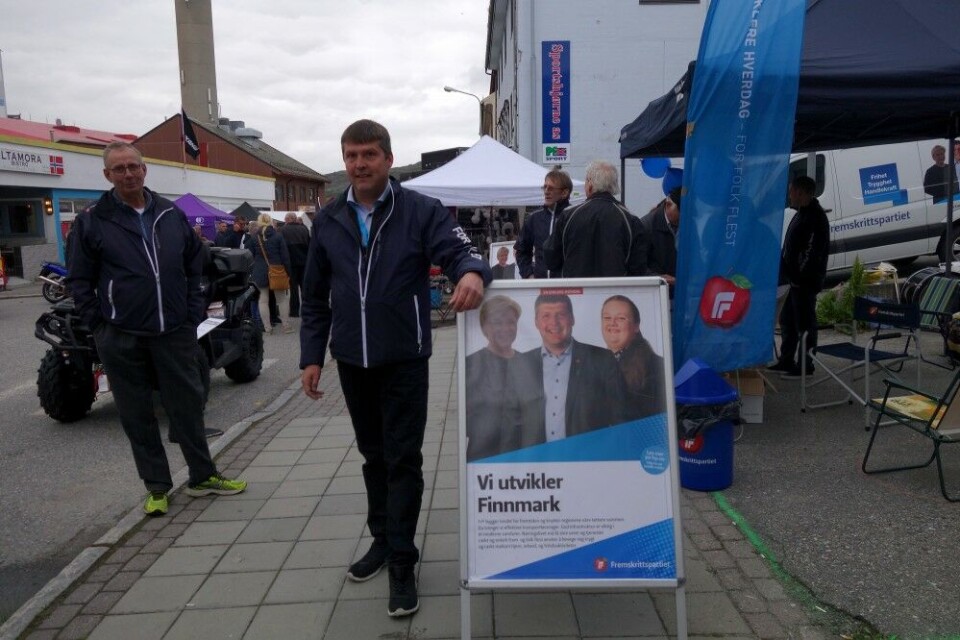
The elections that shook northern Norway
A wave of protest votes moves over the northern parts of the country and hits the Labour Party with full force. It is the populist parties which are election winners in the three northernmost Norwegian counties.
p.p1 {margin: 0.0px 0.0px 0.0px 0.0px; line-height: 22.0px; font: 14.0px Helvetica; color: #000000; -webkit-text-stroke: #000000; background-color: #ffffff}p.p2 {margin: 0.0px 0.0px 0.0px 0.0px; line-height: 22.0px; font: 14.0px Helvetica; color: #000000; -webkit-text-stroke: #000000; background-color: #ffffff; min-height: 17.0px}span.s1 {font-kerning: none}
The social-democratic Labour Party has for decades dominated regional politics in northern Norway. Yesterday, they got a serious blow in the parliament elections. The party’s support among northerners is significantly reduced in the counties of Finnmark, Troms and Nordland.

The election results show that conservative Prime Minister Erna Solberg will be able to continue to rule the country together with coalition partner Progress Party and with support from the Liberal Party and the Christian People’s Party.
The vote is a serious defeat for aspiring prime minister Jonas Gahr Støre and his Labour. In the Nordland county, the party plummets nine percentage points compared with the 2013 elections and looses two of its four parliament mandates. In Troms and Finnmark counties, the party drops respectively 7 and 7,8 percentage points.
Arctic merger will proceed
And with this result, the two latter regions will soon become one. The regional reform of Premier Erna Solberg includes a merger of Troms and Finnmark. The Labour Party opposes the reform and has promised to reverse it if they make power. Now, the reform will proceed.
Regional Labour leader in Finnmark, Runar Sjåstad, has warned against the reform, which he believes could harm neighborly cross-border relations with nearby Russia. The voters seem not to agree.
Sjåstad, who has been Finnmark County Council leader for the past ten years, now makes it to Oslo and the parliament assembly (Storting). But on a far weaker mandate than his predecessors. In parts of the Finnmark County, Sjåstad’s support has been close to eradication. In Alta, the biggest town in the region, the party’s support plummets from 32,5 percent in 2013 to only 16,1 percent in 2017.
Against the regional establishment

Meanwhile, the agrarian Center Party and the far-right Progress Party both reach new height in the region. In Alta, the Center Party wins a historical 14,2 percent of the votes, an increase of more than eleven percentage points from 2013, while the Progress Party gets as much as 32,7 percent of the votes.
The two parties, both of them populist voices in the political landscape, are the great winners in all northern Norway.
Spurred by a wind of opposition against the capital, the Center Party has boosted support with a nationalist rhetoric against «centralization» and European free trade. The party boosts its support to more than 15 percent of the votes in all of northern Norway and will be represented in the Storting with a historical high of four northerners.
Paradoxically, the anti-Oslo winds in northern Norway are hitting the Labor Party more than the government-ruling coalition of the Conservative Party and the Progress Party.
That must be seen as a serious warning to the Labour Party elites in the region. Their future might not be safe.
You can help us…
…. we hope you enjoyed reading this article. Unlike many others, the Barents Observer has no paywall. We want to keep our journalism open to everyone, including to our Russian readers. The Independent Barents Observer is a journalist-owned newspaper. It takes a lot of hard work and money to produce. But, we strongly believe our bilingual reporting makes a difference in the north. We therefore got a small favor to ask; make a contribution to our work.
















